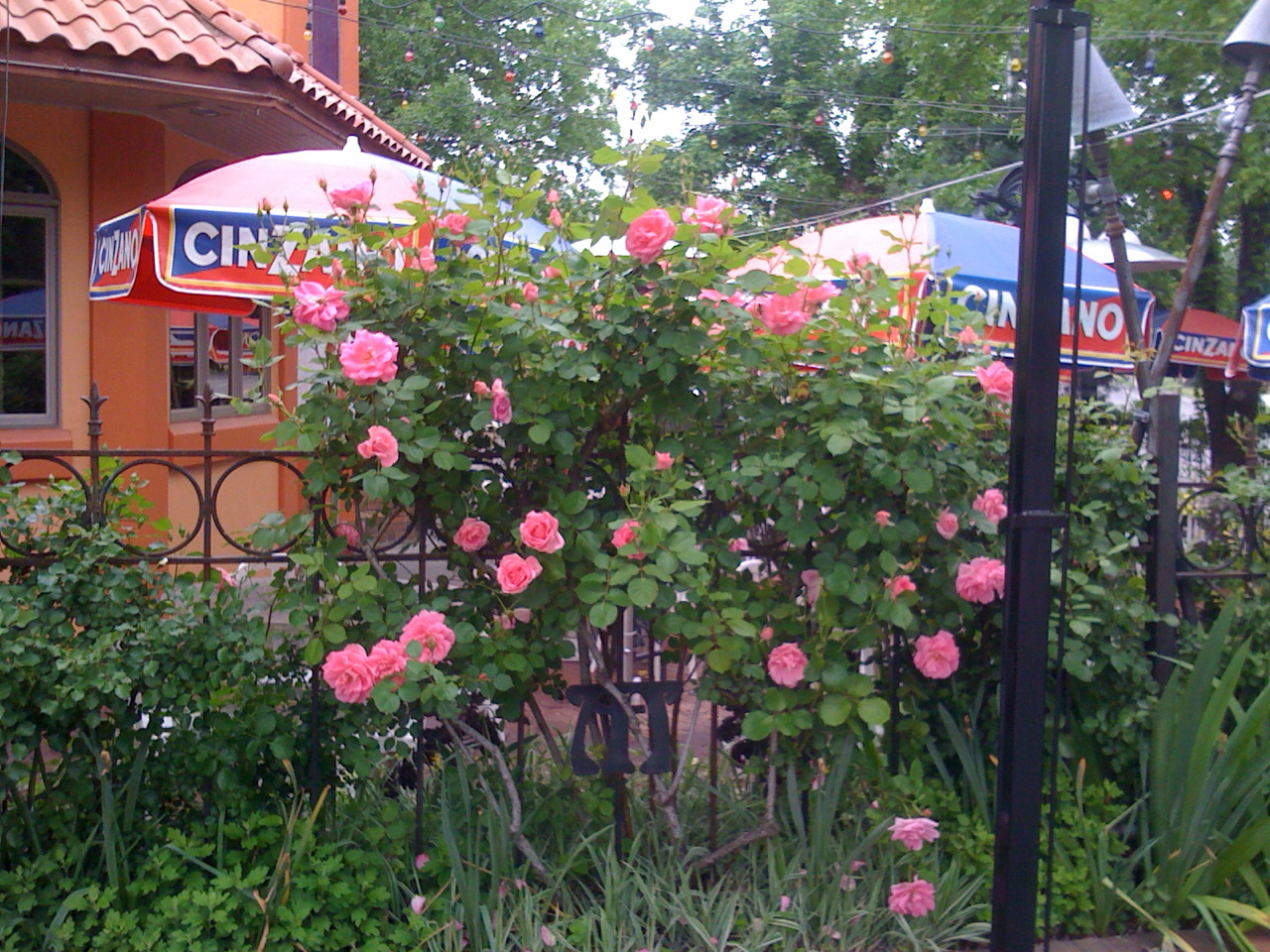
It’s that time of year again when love is in the air and the hearts of all turn to one beautiful flowering plant, the rose. It’s fitting that Valentine’s Day marks a good time for the late winter care of roses. Now is the time of year when roses need to be pruned, fertilized and top dressed in anticipation of the coming spring. Roses may seem to be somewhat imposing, but with the proper gear (rose gloves and a sharp good quality pair of pruners) they can actually be fun to work with. Pruning your roses comes down to a few simple steps of reducing the size to a desirable shape, removing dead and diseased canes and opening up the center to allow for better air flow. Roses are susceptible to fungal diseases and proper air circulation will help decrease their chances of catching one of these diseases. The best place to cut is just above an outward facing bud on each cane you wish to keep. A good rule of thumb is to reduce the rose by about 30%, but they can often handle much harsher pruning. It’s also a good idea to rake up any fallen rose leaves around the base of you plants and discard these. If your roses have had any disease problems cleaning up last years leaves will help maintain a better chance for health this season. But it’s not just pruning and clean up that roses need this time of year, they also need to be fed! One simple approach that roses love, is to sprinkle around the base of the plant out to the drip line (to the width of the rose bush) a good organic fertilizer. These days high quality organic fertilizers containing bone meal, blood meal, microbes and mycorrhizal fungi can found at most garden centers and even big box stores. Roses do seem to have a particular affinity for bone meal, alfalfa meal and kelp meal. All of these contain various nutrients and trace minerals that roses like. The phosphorous in bone meal is particularly good at promoting abundant and lovely blooms. After sprinkling your organic fertilizer around the base of your plant, gently cultivate it in with a cultivator or hoe. A top dressing of compost of 1-3 inches on top of this will provide a nice mulch and continue to gently feed the roses for the rest of the season. Some summer pruning may also be needed to keep your roses in good shape. Follow these simple steps and you will have healthy and beautiful roses every year. If you don’t want to tangle with the thorny little beasties yourself, contact us for our expert organic rose care service.

Tag: organic
Safe and Natural Eco Lawn Care
It’s getting to be that time of year again when everyone seems to have a green lawn. It is not the lush green we associate with summer but rather the artificial green that only means one thing, a spray pre-emergent. Spraying lawn chemicals may seem to provide our lawns a leg up with spring fast approaching, however, we must be careful that we are not doing more harm than good. While lawn chemicals seem to primarily stay on the lawn this is not necessarily true. In a recent study by the Center for Disease Control 100% of the 9,282 of the people nationwide were found to have traces of lawn chemicals in either their blood or urine. The average person in the study had 13 of the 23 chemicals in their system. This is an outrageous concept, and most adults are less susceptible than children. Children are more often playing in the grass, putting their hands in their mouth, and even playing on the carpet (which can contain the chemicals tracked in from outside.) The vapors and chemicals can remain potent for a month or even a year! Not only are there harmful effects for humans but for our ecosystem that we are trying to beautify as well. The chemicals meant to kill pest or weeds may destroy nitrogen-fixing microorganisms that are helping to provide nutrients for our lawns. It may even kill earthworms or other insects that aerate the soil causing it to compact. Along with these effects there are many others. Of the 30 major chemicals used on lawns 23 are detected in groundwater, and runoff causes algal blooms which depletes oxygen levels in water causing lessened aquatic life. Ultimately we can be our lawn’s worst enemy and the effects can be far reaching beyond our capacity to comprehend. However, multiple solutions exist so we do not have to be stuck with this problem.
Our Eco Landsaping lawn treatments provide a chemical free solution that will keep your lawn green and your neighborhood safer. Our basic service utilizes corn gluten meal which acts as a gentle “weed and feed”. We apply this 4 times a year and usually this is enough to keep your lawn looking good. We have a range of other eco friendly services that can be used on an as-needed basis. There are also some maintenance cultural practices that we recommend that will help keep your lawn looking good. We’ll cover that in a future post. Give us a call so we can help you Go green in 2015!

